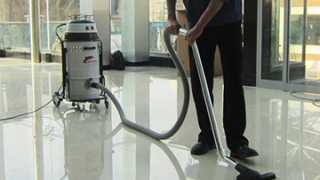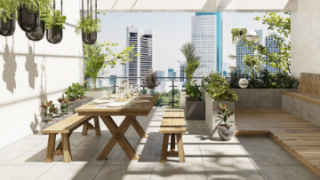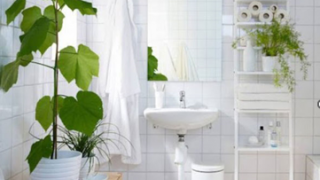Tips for taking care of indoor plants.
Nowadays, the decoration of indoor plants is more and more popular. Growing indoor plants can not only be a decoration, but it can also contribute to eliminating toxic air and filtering fine dust. However, keeping them green and growing steadily is not an easy task. So, here are a few suggestions to make it easier.
1. Choose a place for plants.
Choosing a place for plants in the house is important. There are heliophilous and heatproof plants, but there are also shade tolerant plants. Therefore, depending on their characteristics, we can place them in suitable positions.
2. Make sure the amount of light is sufficient.
Depending on the characteristics of each plant, the required amount of light will vary. There are pot plants that tolerate low light, but others need natural light to grow. However, even if the plants have low light tolerance, you still need to ensure adequate light for them to grow. If you put them indoors, you should leave them in the sun for 2-3 hours per week to grow naturally. In case your house does not have a garden or balcony, then you should place the plants near a window to get sunlight for a few hours so that they can absorb enough light to grow.
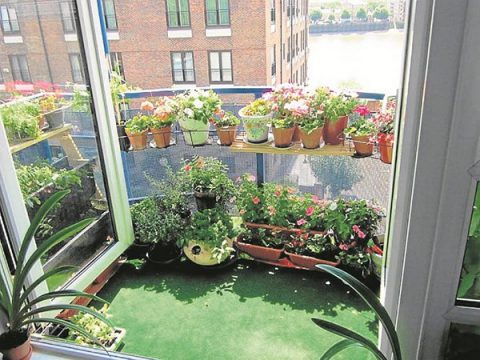
3. Provide enough water for indoor plants.
Water is an essential need of all living things. For indoor plants, you need to provide them with an appropriate amount of water depending on their types – xerophyte or water-retaining, but remember to pay attention to use clean water at normal temperature.
It is advisable to observe or gently press the surface of soil to know the moisture content of soil. Excessive, unnecessary watering may cause the plants to rot. On the contrary, if they lack water, they will turn brown and wither.
It should be noted that in the winter, plants need less water than in the summer or spring. Some types like orchids need careful watering, so before doing this, you should search thoroughly.
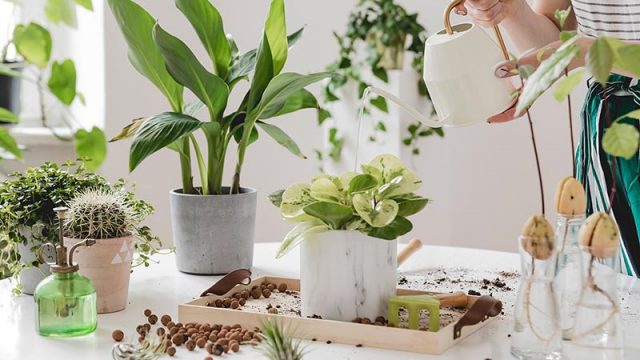
4. Pruning and cleaning for ornamental plants.
Indoor plants are different from those grown in the wild. Therefore, to ensure that they can grow green and beautiful, it is advisable to regularly prune them.
• Press down the roots so that plants cannot grow too big to crack or break the pot.
• Prune old, dry leaves and cut old branches to reduce insects.
• Plants are able to purifying the air, so you should regularly wipe dust on the leaves to keep plants green.

5. Add nutrients to plants.
Fertilizing can promote plant growth. About half a month, you should apply 5% synthetic fertilizer to plants once – this is just enough nutrients to help plants grow best. A tip for you, using rice water to water plants is also good for their growth.
On the contrary, if you fertilize too much, the plants will grow quickly, lose their shapes and even die. If too little fertilizer, it will make the plants lack of nutrients, difficult to grow and kill branches.
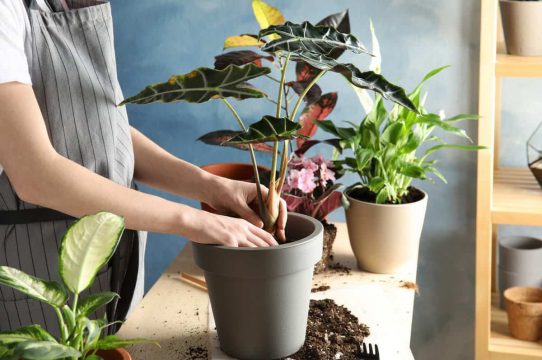
6. Put the plants in a place out of reach of children and pets.
Children often play and interested in all objects in the house. They can use scissors to cut branches of plants, push or break potted plants. As for dogs and cats, they have a hobby of digging in the ground or gnawing on plants. Therefore, plants should be placed in proper places to avoid the impact of children and pets.
In addition, many ornamental plants have very toxic resins, causing rashes, burning, and poisoning when being touched or eaten. Therefore, you should keep children and pets away from ornamental plants placed in the house.
7. Plant disease prevention.
You should not use pesticides for indoor plants because it will affect your own health. You can use mosquito repellent to get rid of pests.
If the plants show signs of pests such as powdery mildew, fungus, aphids, etc., you should use alcohol to wipe the leaves and roots, then use organic drugs to control pests. If the disease is serious, it is necessary to take the plants outside to treat.
8. Replant annually.
Every year, your bonsai will grow bigger. So once a year, you should replant them, prune the leaves and move them to larger pots. This is also a way to take care of indoor plants, helping them to grow better.
The right time to replant is in spring or early summer. During this time, the weather is cool, with high humidity, so it is suitable for plants to adapt well to the new pot.

